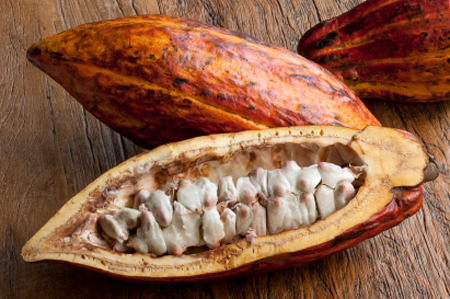Ivorian Cocoa Faces Dryness Risk With ‘Minimal’ Rain Relief
Category: Cocoa
 (Bloomberg) – Cocoa farmers in Ivory Coast will need more rain if the outlook for the next harvest is to improve in the world’s largest producer of the chocolate beans.
(Bloomberg) – Cocoa farmers in Ivory Coast will need more rain if the outlook for the next harvest is to improve in the world’s largest producer of the chocolate beans.
Showers forecast for coming days will bring “minimal relief” after rainfall was 40 percent below normal from July 1 to Aug. 19, according to MDA Weather Services and Speedwell Weather. Recent light rain wasn’t enough to penetrate the soil and help beans to develop, said Stanislas Koffi, head of the SCAT farmers’ cooperative in Tahe, southwestern Ivory Coast.
“The current weather is making farmers worried,” said Bernard Nguessan, who has been farming cocoa for 40 years in Gabiadji, southwestern Ivory Coast. “We haven’t had rains. Cocoa leaves are dry and we see few pods, about five or six, while last year we saw lots because of good weather conditions.”
Cocoa, the second-best performer in the Standard & Poor’s GSCI commodity index this year, may extend gains if dry weather persists through September, said Max Goettler, a trader at Rotterdam-based Cocoanect BV. That may raise costs for chocolate makers from Lindt & Spruengli AG to Barry Callebaut AG, the world’s largest cocoa processor.
“There is upside risk in the market,” Goettler said by phone Aug. 11. “You can’t switch to another commodity if you need cocoa. You either use it or you don’t use anything.”
Cocoa climbed to 2,242 pounds ($3,515) a metric ton July 15 on ICE Futures Europe, the highest since 2011, as the 2014-15 crop fell short of forecasts in Ghana, the second-largest producer. High prices for cocoa, hazelnuts and almonds, are creating challenges for Lindt, the company said Aug. 18, even as it reported higher sales.
Prices Fall
Prices have fallen 7.9 percent since the peak to 2,066 pounds a ton by 11:07 a.m. in London as bean processing, an indication of demand, fell in Asia and North America and was little changed in Europe in the second quarter.
A lack of demand may mean no cocoa rally even with the dry spell in Ivory Coast, said Jonathan Parkman, co-head of agriculture at London-based broker Marex Spectron Group.
Global chocolate confectionery sales fell 2.1 percent from September to April, Barry Callebaut said last month.
“On the demand side, there is no evidence to show that it is anything other than pretty poor,” Parkman said by phone Aug. 10. “If you put prices into context over the past few years, we’ve got relatively high prices now for cocoa.”
Dry Spell
Ivory Coast will face another dry spell from Aug. 28 to Sept. 5, Speedwell said in an Aug. 18 report. Rabobank International lowered its cocoa crop forecast for Ivory Coast by 50,000 tons to 1.7 million tons for next season, citing dry weather. Production in Ghana will be 7.8 percent less than previously estimated, the bank said in a report Thursday.
If current dry weather combines with El Nino effects, the crop starting in October will probably be smaller than in the past two years, according to Victoria Crandall, a soft commodities analyst at Lome, Togo-based Ecobank Transnational Inc.
El Nino reduces global cocoa production by an average 2.4 percent, with Ecuador being the most affected country, according to a study by the International Cocoa Organization. In West Africa, El Nino causes output to decline by about 2 percent in Ivory Coast and by 1.7 percent in Ghana.
“The longer the dry spell extends, combined with El Nino, people will become increasingly wary,” Cocoanect’s Goettler said. “The new crops starting in October would be affected.”

